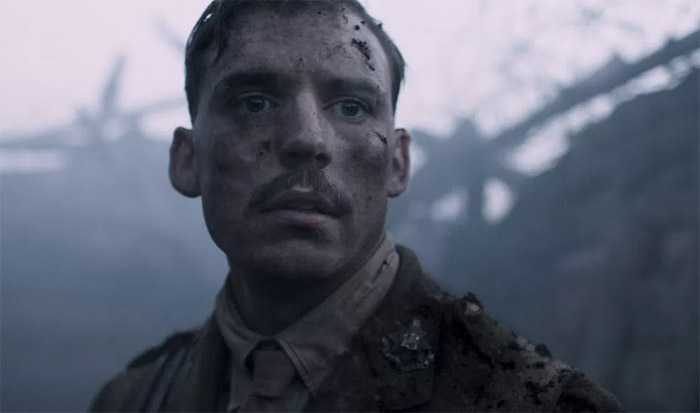Directed by Saul Dibb
Picturehouse, Liverpool
2th – 8th February 2018
Reviewed by Colin Serjent
Some have made the bizarre comment that director Saul Dibb’s version of Journey’s End is stagy. But surely this comes no surprise given that it is adapted from R. C. Sherriff’s play of the same name, first staged in 1928 and filmed in 1930.
The story covers four days in the British trenches in France in the First World War during March 1918.
The troops are awaiting an imminent invasion by the German troops who, as one soldier commented, “are only the size of a rugby pitch away from us.”
What struck me was the absurdity of the situation of two groups of combat soldiers, many of them destined to die, battling to gain control of some godforsaken piece of land in rural France.
In the ensuing eight months, following this period, a million more men from both sides were slain.
It has been posed why the film was made of something which happened a hundred years ago. The answer is that nothing has changed in the way individuals in war zones react to stress.
This is notably the case with Commanding Officer Stanhope (brilliantly played by Sam Chaflin).
He is forever knocking back whiskey to help ease his mental pressures and is on the verge of a nervous breakdown.
He is an utterly changed man from the one who first enlisted or was conscripted to take part in the The Great War.
There is not a great deal of battlefield action but rather a searching examination of men at war not only with the Germans but also with themselves.
The only female shown in the film is the sister of Raleigh (Asa Butterfield) in a brief scene back in England reading his letter sent from the front.
Barely turned twenty-years-old and wet behind the ears, to coin a phrase, Raleigh arrived at the trenches with no combat experience but nevertheless he is immediately given command of a group of soldiers.
During this so-called ‘Great War’ the meaning of a life, or rather the lac k of it, was illustrated when one soldier commented that some of the soldiers who died were not buried but instead their bodies were used as strengthening material to reinforce the structure of trenches.
Grotesque is an apt term to describe that chilling reality.
NERVE supports workers struggling for a living wage.
